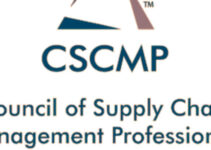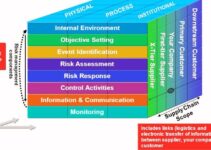Technology would help you to perform various activities in the order life cycle from customers’ inquiries to fulfilling orders. Online businesses and e-business platforms allow you to automate various activities. Today, we’ll discuss selling chain management; its definition; elements, objectives, driving factors, and infrastructure for SeCM.
What is Selling Chain Management?
Selling chain management (SeCM) is a form of application framework that allows businesses and companies to sell effectively and in a better way across all channels. It allows you to develop a connection between the sales process and previously in-completed sales within the company. However, it helps you to generate new revenue sources while improving the effectiveness of the company’s current sales channel and sources.
Historical Background
Earlier e-commerce platforms weren’t providing the customer-interactive experience. It is because they weren’t studying the purchasing patterns and collecting the customer’s profiles other than basic demographic data.
Many niche-focused modern platforms are employing the targeted product and service approach by providing customized services. It results in the form of a complicated tech environment with a loosely combined integrated sales system. However, it is not easy to extend, customize, and keep up with such a system, when online sales channels are different from the rest of the company.
Businesses and companies were facing the following challenges while amplifying the connection from sales to marketing, and they’re as follows;
- Campaign management
- Contracts and orders
- Opportunity management
- Activity management
Objectives of SeCM
Some of the main goals and objectives of selling chain management are as follows;
- Coordinating and collaborating with team selling
- Amplify the effectiveness of the sales force
- Making it easier to order customized products and goods
- Adding value for customers
- Making the ordering process easier for customers and clients
- Connecting with potential customers and making them actual customers
Driving Factors for SeCM
Some of the main driving factors for selling chain management are as follows;
Self Service Order
The sale process has become difficult because the customers demand customization, quick turnaround time, and better service. Businesses and companies are analyzing their sales processes to make things easier in the modern and new market. Customer preferences have changed in terms of what, when, and how in terms of satisfying their needs and wishes. For instance, Citibank targets college students offers them credit cards, and makes the loan process simpler and easier.
Presale Tech Support Cost
The needs and demands of potential customers are that they want tech support specialists to be aware of the specifications during and after the sale. The tech support staff has the expertise and clear comprehension of various product lines and how they could satisfy the needs and wishes of customers.
Effective tech support services amplify the selling cost and expense because they transfer the burden from the sales staff to the tech personnel. Resultantly, it consumes a lot of time in the preparation of proposals and sales quotes. Customers want limited response time as the business starts growing, it is because companies deliver sales proposals in a short time.
Order Errors Cost
The frequency of order errors happens due to the high custom system, services, and products throughout the sales-and-delivery cycle. Errors could happen in the product configuration stage because they don’t satisfy the tech requirements and demands of customers. Invalid configuration of equipment could stop the production line in the manufacturing process. A miscalculation of product configuration could ship the product to the wrong customers; correcting the mistake would be expensive and often irrecoverable.
Channel Growth Issues
The selling process is not simple anymore due to the growth of various channels.
- Channel selling or 3rd party resellers
- Self-service: selling online without any assistance
- Telesales: selling products via call centers
- Field sales and in-store branch sales: selling in person with assistance
The growth and success of the direct-to-end user and built-to-order model are pressurizing companies to amplify the information flow through various sales channels to decrease cost and amplify market and time.
Complicated Products
High customer demand and product complications for time-efficient orders impose pressure on companies to amplify responsiveness and productivity. Various companies are launching new products increasingly; it has limited the product lifecycle, and it has made the salesperson’s job even more difficult. However, the productivity and efficiency of sales are a major issues in various industries that are facing limited labor markets and seasoned sales professionals.
M&A and Deregulations
Some companies are facing sales and marketing challenges because of product line expansion and new channels; the others are facing various types of changes within the industry. It is like the effect of deregulation on both the utility and telecommunication industries.
Infrastructure for SeCM
Some of the main elements of infrastructure for selling chain management are as follows;
- Incentive management solutions
- Sales opportunity management
- Personalized internet selling
- Content management
- Order management
- Dynamic pricing
- Configuration
- Channel management
- Integrated selling systems
- Market encyclopedia
- Electronic catalogues
Conclusion: Selling Chain Management
After an in-depth study of selling chain management; we have realized that SeCM has become significant for modern and e-commerce businesses and selling. If you are learning about SeCM; then you should keep in mind the abovementioned driving factors, goals, and infrastructure elements.
Ahsan is an accomplished researcher and has a deep insight in worldly life affairs. He goes Live 3 days a week on various social media platforms. Other than research writing, he’s a very interesting person.


